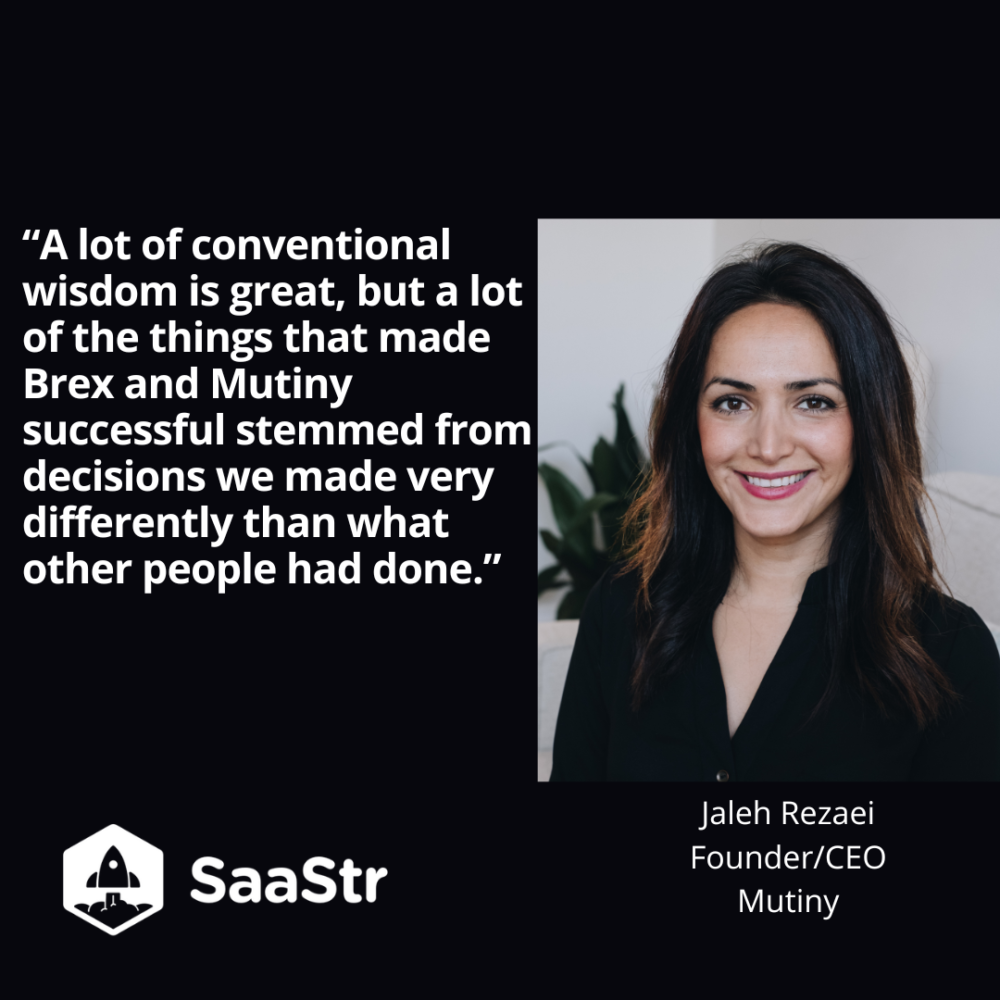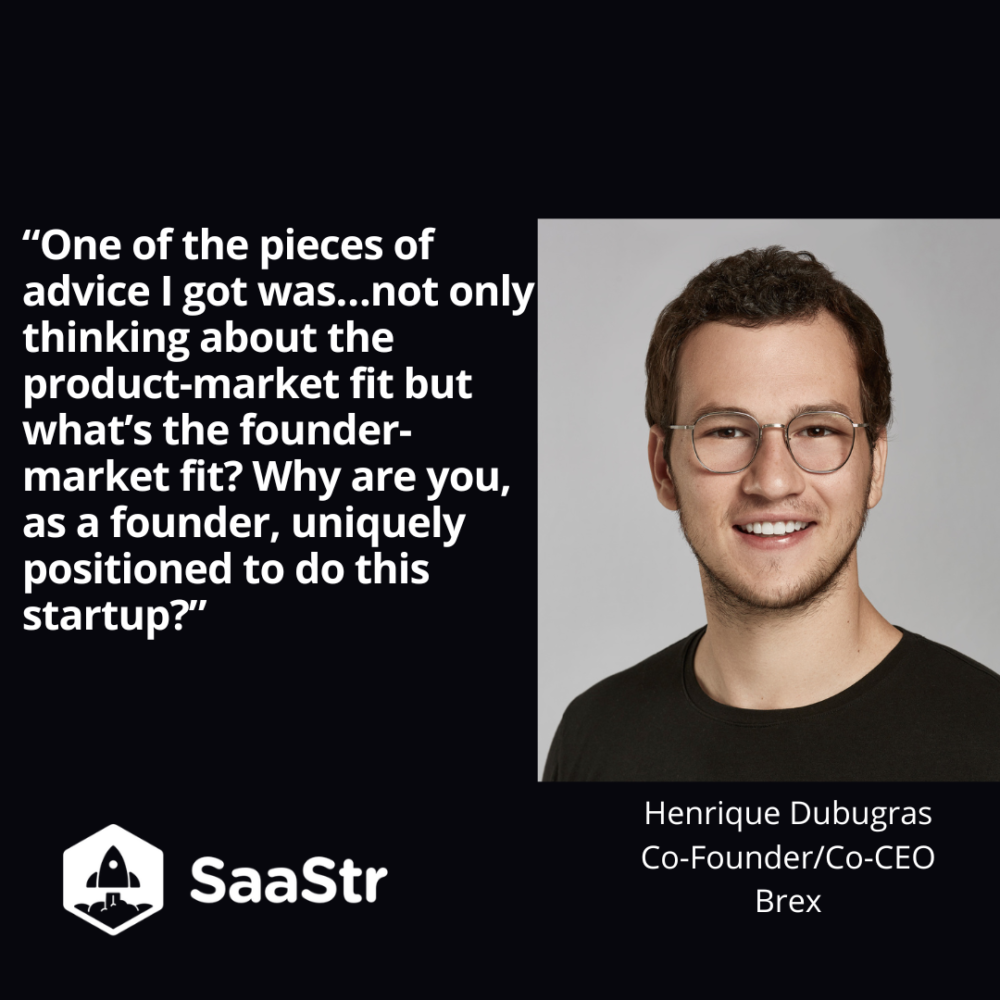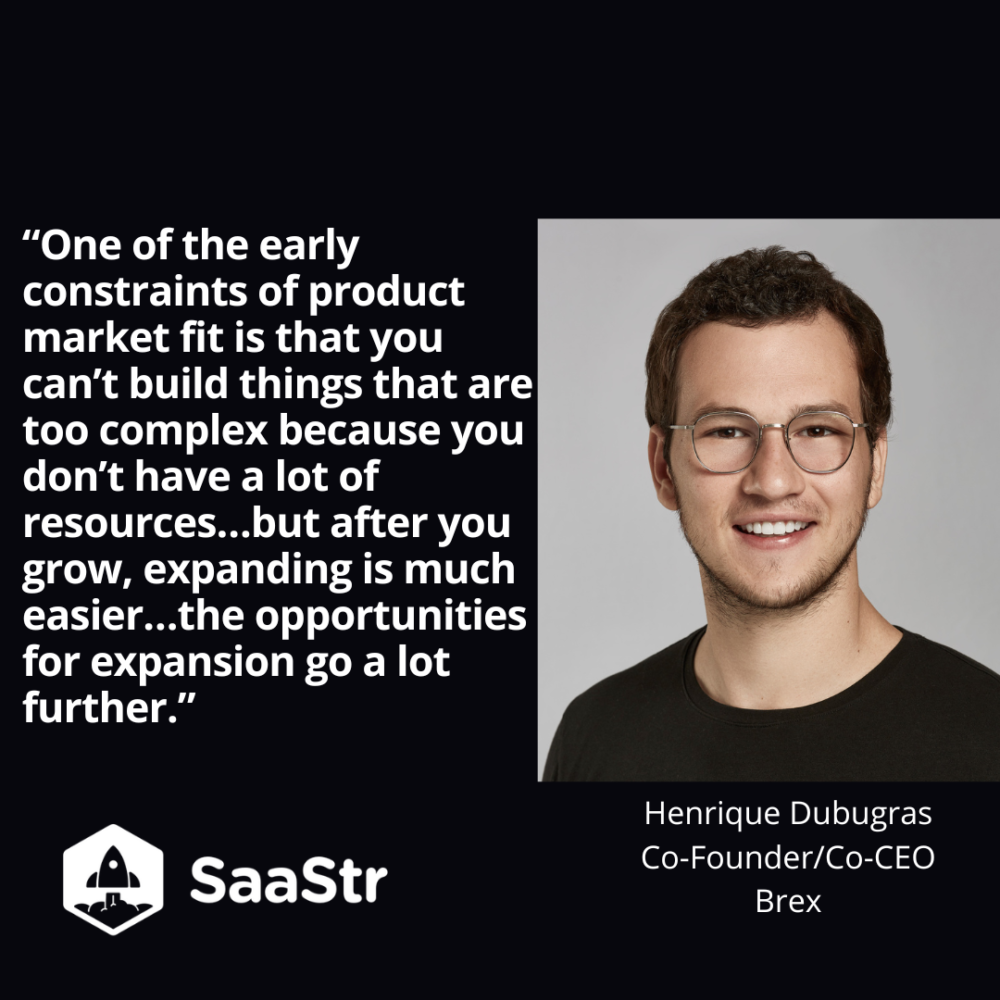How do you create a product that becomes essential to your customers’ lives? In this SaaStr Annual session, Brex CEO & Co-Founder Henrique Dubugras and Mutiny CEO & Co-Founder Jaleh Rezaei reveal the secrets to building a successful SaaS business based on a product that customers need and love.
Their first piece of advice for SaaS founders? You can’t disrupt a market by operating like everyone else. As Rezaei explained, “A lot of conventional wisdom is great, but a lot of the things that made Brex and Mutiny successful stemmed from decisions we made very differently than what other people had done.” Approaching your product and business differently may give your company the edge it needs to reach more consumers in the market.

Understand Your Market
Your customers won’t want to hear about your amazing new product. Instead, they care about solving their problems, and if your product can do that for them, they will consider converting. But to drive conversions successfully, you must first make an effort to understand your market, their pain points, and how you can solve their problem.
Brex started out unsure of its direction as a company, and to get inspiration, the founders went to Y Combinator. The experience and learnings from YC were eye-opening. As Dubugras described, “One of the pieces of advice I got was…not only thinking about the product-market fit but what’s the founder-market fit? Why are you, as a founder, uniquely positioned to do this startup?”
Once the Brex founders began thinking in this founder-market fit mindset, they gravitated toward Fintech since they both had fintech experience. They considered creating a corporate credit card for startups, which was going well for a while. But over time, they considered expansion. Dubugras explained, “One of the early constraints of product market fit is that you can’t build things that are too complex because you don’t have a lot of resources…but after you grow, expanding is much easier…the opportunities for expansion go a lot further.”

The founders at Mutiny had an interesting start working together at a different company, Gusto. During their tenure at Gusto, they figured out how to convert top-of-the-funnel traffic into more revenue, upsells, and referral customers. They realized that this conversion was something that every business would need eventually but wouldn’t necessarily be able to build from scratch. So, their goal was to create a no-code platform that companies could use to convert and build revenue.
Rezaei shared Mutiny’s early thought process for starting their company, “We had this big vision, and the conventional wisdom at the time was, ‘startups are inherently chaotic, and you should expect wild iteration and mess all over the walls; otherwise, you’re not doing your job.’ And while I think that’s true –– that there is a lot of iteration –– because we had a clear sense of what we were going to build, we also wanted to create structure and stability within which we could do our iteration.”
To create this stability, early on, Mutiny thought about what hypotheses needed to come true for the vision to work. They made five hypotheses with measurable metrics to prove their efficacy and actionable natures. This organized framework helped the early teams iterate more smoothly, operate more holistically, and get better recruitment results.
Advice for Startup Founders
- Make Your Product Fit:
Brex had a unique beginning in that their product –– a company credit card –– was already something that existed. However, they wanted to create a product that would be more appealing than what was already out there, so they made their corporate card more like an app that could make the card and financial process much easier. Dubugras described it as working backward from the value proposition to build something they knew customers wanted. - Solve For Team:
Mutiny approached recruitment in a unique way. They built their roles around particular company needs, not the traditional industry-required skillset. For example, the Head of Customer Success didn’t come from a standard customer service background. Instead, Mutiny was looking for someone who could have both an analytical and service-oriented mindset. The person they hired for the role had a mathematics degree, consulting experience, and writing competition wins. She turned out to be the perfect fit. Rezaei suggests hiring talent based on instinct. Forget how a candidate looks on paper, and trust your gut. - Fail Well:
Be prepared to make mistakes. However, it’s not about the failures; it’s how you bounce back and what you learn.

Key Takeaways
- Don’t be afraid to disrupt the status quo and operate differently than anyone else.
- Consider both product-market fit and founder-market fit when you’re starting a company.
- Create an organized framework that can support your early iterations.
Be prepared to fail and learn.

